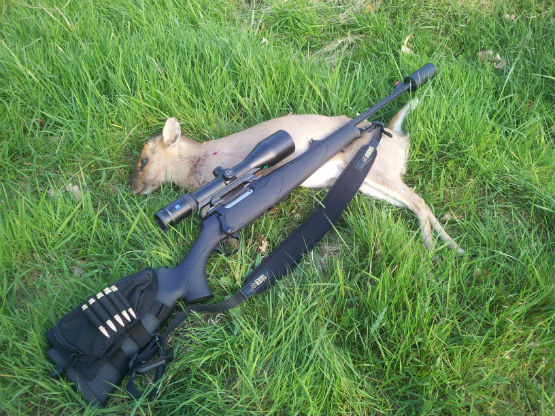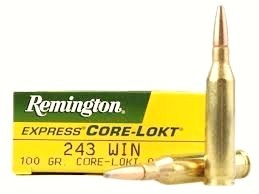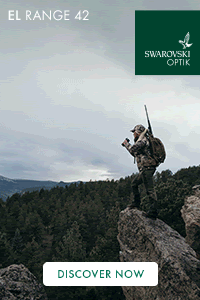As we approach the lead ammunition ban Peter S Jones considers if the .243 has a future in UK deer management.

The .243 Winchester has long held its place as the gateway calibre for UK deer stalking. Introduced in 1955 by Winchester and based on a necked-down .308, the .243 quickly proved itself to be more than just a varmint round.
Capable of propelling bullets between 55 and 115 grains, it has traditionally been those 90 grains and above loads that have been utilised by UK Deer Stalkers who have also benefited from the flat short-range trajectory, low recoil, and mild muzzle blast making it especially attractive to new hunters, younger shooters, and those of lighter build.
In terms of performance, a traditional 100-grain lead .243 round produces around 1,950 ft-lbs of energy at the muzzle. This comfortably meets the minimum 1,700 ft-lb energy requirement set out in the Deer Act, while the calibre itself, measuring .243 inches also meets the .240-inch minimum.
But as we approach the planned lead ammunition ban, the 243 faces a serious turning point.
 Full enforcement of new legislation is expected by 2029, therefore, questions are rightly being asked about whether the .243 has a future in deer management.
Full enforcement of new legislation is expected by 2029, therefore, questions are rightly being asked about whether the .243 has a future in deer management.
Under government proposals, all calibres 6.17 mm and above (including the .243) may no longer contain more than 3% lead. This is not just for live quarry but relates to zeroing or shooting targets in the field. Copper-coated bullets with lead cores won’t make the cut either. This is a full transition to non-lead, regardless of whether the meat is for sale or personal consumption.
So, with energy only marginally above the required 1700 ft lbs, the key concern is whether non-lead .243 rounds can still consistently meet the required energy thresholds.
Field testing shows encouraging results. A 2023 Shooting UK review compared traditional lead loads to several non-lead alternatives. Lapua’s Naturalis 90 grain copper bullet produced 1,721 ft-lbs of energy and grouped well, indeed virtually indistinguishable from a standard 100 grain soft point, demonstrating that with sufficient motivation, it’s all perfectly possible, however, other rounds under performed. Indeed, a number of non-lead alternatives exhibited poorer accuracy and insufficient energy.
Supply chain is the next hurdle. While copper and monolithic bullets are becoming more common, manufacturers have cautioned that rapid, large-scale adoption is not straightforward. Materials, production capacity, and import volumes will all need to scale up if demand is to be met ahead of the 2029 deadline.
So, does the .243 Winchester still have a future in UK deer management? It’s far from guaranteed. While the calibre will remain legal post-ban, its continued relevance will depend on whether manufacturers are sufficiently motivated to produce reliable, non-lead ammunition that consistently meets energy requirements. Without that support, the .243 may struggle to remain a practical option. And with other 6.5mm calibres offering better energy margins and stronger non-lead performance, they may seem a more straightforward choice for those looking to future-proof their kit.
That said, tens of thousands of deer managers in the UK still use the .243, and for many, switching calibres is not a simple decision. Firearms licensing departments are already under pressure, and variations can take months to process. For this reason alone, the .243 may endure—not because it’s the ideal tool in a lead-free future, but because it’s already in the cabinet, understood, and widely authorised.
For more information about rifle cartridges and calibres, follow this link: Rifle Calibres



















